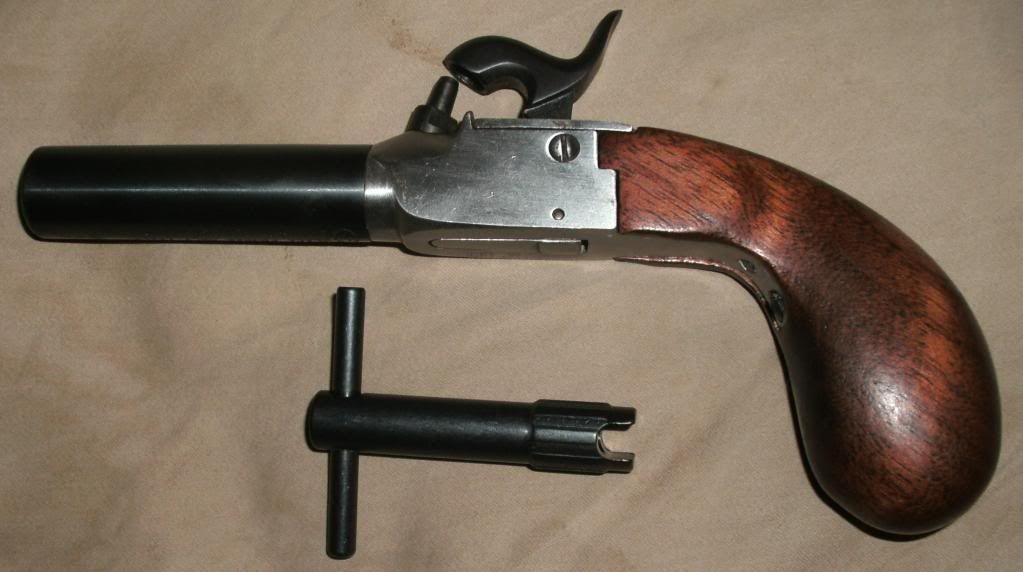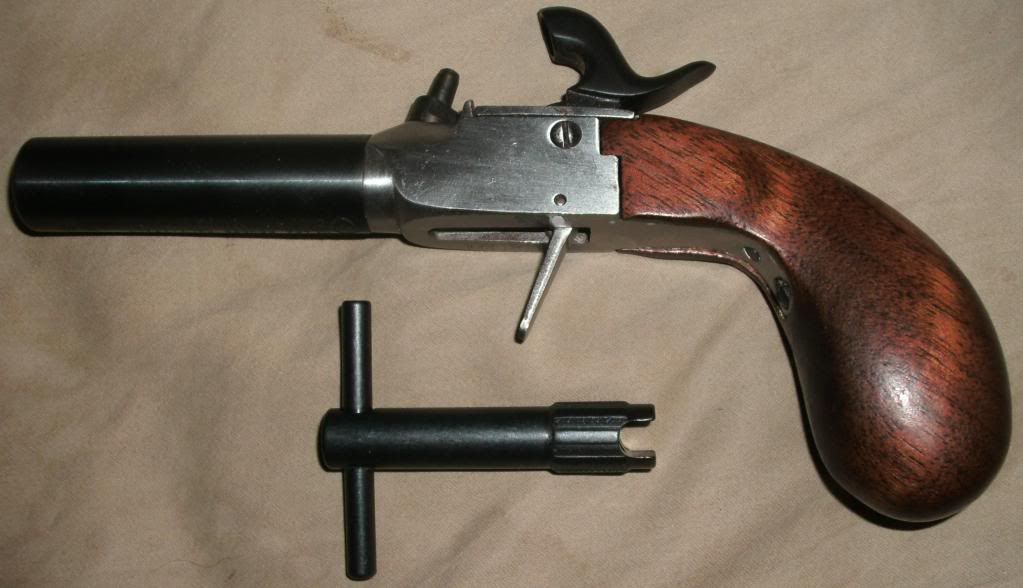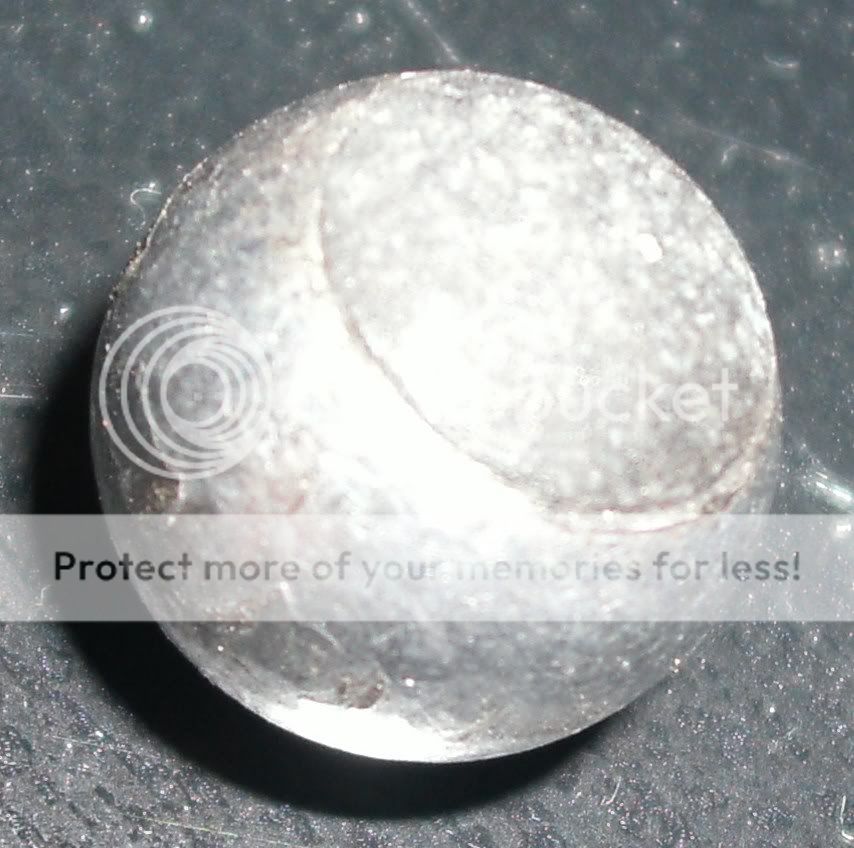PreserveFreedom
40 Cal.
- Joined
- Aug 13, 2011
- Messages
- 206
- Reaction score
- 3
This is commonly called a muff gun, belly gun, or boot pistol. I bought a kt to build it, but it was hardly a kit. All I had to do was some sanding on the stock and then I stained, oiled, and waxed it.

The trigger is hidden until you cock the pistol. This means the hammer is the only thing you have to worry about catching on clothes and junk. Once you cock the hammer the trigger drops down.

If you look real close you will see some grooves on the nipple wrench, right above where the wrench grips the nipple. These grooves line up with the rifling so that the barrel can be tightened and loosened. My only worry about the pistol is that the rifling or wrench would get stripped or worn. I do not know if a replacement wrench or barrel is available anywhere.
Notice there is no ramrod. For those not familiar with the screw barrel pistol, here is how it works. You unscrew the barrel from the frame. You fill the powder chamber with powder. I have been told they tend to hold 7 - 10 grains of 3F. Next you stick a .451 diameter lead ball on top of the powder. Finally you reinstall and tighten the barrel over the ball. Doing so begins swaging the ball down to the barrel diameter, which is .44 cal. Because of this process, additional pressure is built up during firing which is said to increase pressure and velocity.

The trigger is hidden until you cock the pistol. This means the hammer is the only thing you have to worry about catching on clothes and junk. Once you cock the hammer the trigger drops down.

If you look real close you will see some grooves on the nipple wrench, right above where the wrench grips the nipple. These grooves line up with the rifling so that the barrel can be tightened and loosened. My only worry about the pistol is that the rifling or wrench would get stripped or worn. I do not know if a replacement wrench or barrel is available anywhere.
Notice there is no ramrod. For those not familiar with the screw barrel pistol, here is how it works. You unscrew the barrel from the frame. You fill the powder chamber with powder. I have been told they tend to hold 7 - 10 grains of 3F. Next you stick a .451 diameter lead ball on top of the powder. Finally you reinstall and tighten the barrel over the ball. Doing so begins swaging the ball down to the barrel diameter, which is .44 cal. Because of this process, additional pressure is built up during firing which is said to increase pressure and velocity.






